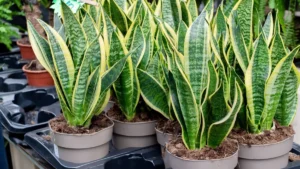
Snake plants are popular beginner-friendly plants that can grow and thrive in various conditions.

While most plant enthusiasts say that this is a “set it and forget it” type of plant, I wouldn’t totally agree on that. There are still some silly mistakes you can make to completely ruin your snake plants!
Insufficient watering, excessive sunlight, chilly temperatures, and overfeeding are among the factors that might harm your beloved snake plants, resulting in their leaves wilting and drooping.
All of this can be avoided by simply learning more about the snake plant care mistakes and how to correct them.
Let your green companions grow and thrive!
1. Too Much Direct Sunlight
Sunlight exposure is very important when cultivating plants indoors, especially if they are sun-loving plants that need at least 6 hours of sunlight throughout the day.
However, there’s such a thing as too much sunlight.
Although snake plants enjoy bright sunlight, harsh light still can still scorch their leaves and damage their health. Bright, indirect sunlight is optimal for almost all snake plant varieties.
You’ve probably heard that snake plants are resilient plants that can adapt to low light settings; however, it’s not a good idea to keep them without a light source for too long.
Provide your snake plants with adequate light and watch them grow vigorously!
2. Overfeeding
Less is more when it comes to feeding snake plants because they don’t need much nutrients to grow and thrive.
One of the reasons your snake plant might be dying is giving it more plant food than it actually needs. Overfeeding can burn the plant and cause brown leaf tips.
Use your fertilizer wisely – apply it once and sparingly during the growing season.
3. Frequent Watering
Keeping your plants hydrated and nourished is crucial, but frequent watering might have more negative effects than positive!
Overly saturated soily is not something snake plants are keen on; they enjoy watering only when their soil is dry, which is usually every two or three weeks.
Overwatering might lead to numerous issues, including yellowing of the leaves and rotting of the roots, which can completely ruin your plants.
4. Inadequate Drainage
Poor drainage and overwatering are a recipe for disaster when it comes to cultivating tropical plants.



